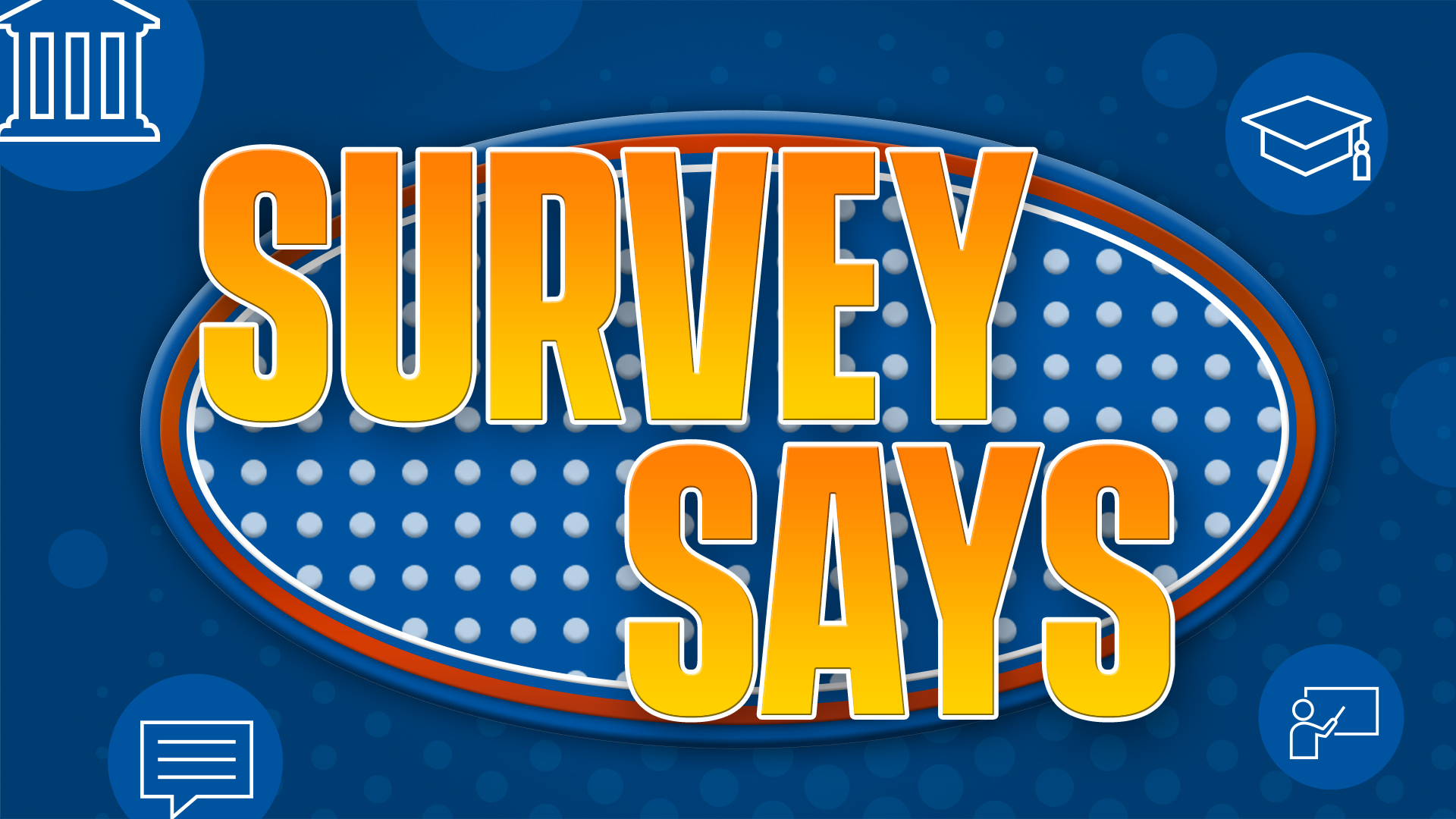
Survey Says: How Your Voice Shapes the Library
Article by Allison Ebner | Graphics by Sean Diffendall
Imagine walking into Morris Library. Where do you go first? Which areas do you spend most of your time in? If you have a question, where do you go for help? When you’re looking for something online, can you find it on our website? How does your use of the library contribute to your success?
To understand how the Library, Museums and Press can best support you, we gather the answers to questions like these through various modes of assessment.
As lifestyles and technologies change, so do our users. With direct input from you, our diverse audience, we are able to make evidence-based decisions on the types of programs, collections, services and spaces that best meet your needs.
Here are a few of the tools we use to do so:
Surveys
Whether it’s a quick follow-up after attending a workshop or a longer reflection on how you use the Library, surveys help us gather a wide range of data from a wider variety of people. They can be done in-person and online, making them a flexible tool.
Through surveys, we’re able to hone in on a target audience. We’ve held surveys focused on how specific user groups, like undergraduates, faculty or graduate students, engage with the Library; and others that narrow in on specific colleges or disciplines to explore how we can enhance interactions with those scholars. We reach out to users of specific services or attendees of particular programs and classes to discover what worked and what can be improved; and we ask our broad base of Library users questions to get an overall picture of use.
All of these surveys yield valuable feedback that help shape and prompt decisions within the Library. After conducting the LibQUAL+ survey in 2016, which measures the quality of Library-related aspects like staff, physical and electronic collections, online tools and facilities, we saw that space was a prevailing theme for many of the 3,000 survey participants. Specifically, users valued quiet, comfortable and inspiring spaces—and wanted more group study areas.
This led to a flurry of new and enhanced spaces. Following the survey, we added 10 new group study rooms throughout Morris Library, bringing us to a total of 35 group study rooms. We replaced some outdated and uncomfortable study carrels with ones that have cushioned seats and built-in outlets. We created a Reflection Room—the first of its kind on campus—for users to have a safe place to pray, meditate and relax. We also created the Nursing Mothers Room, one of only a handful of these spaces on campus.
Usability Testing
To ensure we make it as easy as possible for you to locate and access what you need when you need it, we conduct usability testing. During this process, we ask participants to complete a typical task—reserve a group study room, register for a workshop, locate a specific database. We observe their verbal and non-verbal cues as they talk through their thought process while completing the task. In doing this, we can determine how easy or difficult the task was, and then consider ways to streamline the process where necessary.
One area where we use this type of assessment is the Library website. In July 2018, we launched the first iteration of a redesigned website intended to be more user-friendly, mobile-friendly and accessible. Soon after, we began usability tests with undergraduate students, graduate students and faculty. To make sure they could easily find the information they need, we evaluated the global navigation menu and overall design of the homepage. With those responses, we made improvements to the calendar listings, homepage menu and database pages.
Observational Studies
In many instances, actions speak louder than words. Rather than asking users, observing users in the “real world” can shed valuable insight on how they use resources and how we could better support their needs. This type of assessment is particularly useful when thinking about the overall Library environment.
In 2018, we began an observational study of space in Morris Library. To conduct this study, we divided Morris Library into small zones to measure the various ways people are engaging with the space during different times of day and days of the week. We look at the overall picture—the general noise level and amount of people in the zone—as well as more specific details. Are people using technology? Do they have food? Are they working in groups or as individuals? Are they using the furniture as is or have they moved it around?
This type of data can support ideas and decisions related to space. By identifying the busiest study areas of the library, we can determine where additional seats would be most beneficial. By pinpointing which furniture is the last to be used, we can gain insight on which furniture can and should be replaced. After renovations this summer, the heavily used graduate student study area on the third floor will have comfortable, flexible furniture as a result of insights from this study.
—
These are just a few of the modes of assessment we use to make changes and improvements in support of your changing needs. We also host focus groups; make direct asks for feedback following instruction sessions; and gather an array of usage statistics, such as the number of items checked out, the number of visitors to a given location and the most popular databases.
To ensure these types of data-informed decisions remain a priority, in 2017, we established a director of assessment position to oversee all of the assessment initiatives. In Spring 2020, we will conduct the LibQUAL+ survey again to gain updated insight on the changing needs of our users.
To further improve our services, evaluate our impact on your success and create the Library that best serves you, we will continue asking for feedback, tracking trends and gathering data through various methods of assessment. As part of that effort, you may be asked to participate through surveys, focus groups, research studies or in-person interactions.
With your input, you help us create the best Library to support your needs.
